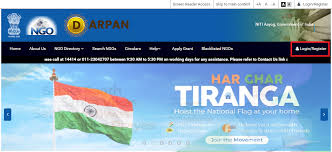Parivahan
The “Parivahan Sewa” portal is an online platform developed by the Ministry of Road Transport and Highways (MoRTH) in India. It serves as a comprehensive digital service for various transport-related activities and services. The Ministry of Road Transport and Highways (MoRTH) has been facilitating the conveyance of the citizens by providing various online services thus preventing them from all hassles and queues. Parivahan is a far-reaching e-governance application extending its services related to vehicle registration, driving licenses and other e-services to various states of India. The Transport Department of the Rajasthan Government has established an online portal to enable its citizens to access various services. There are many check posts in the inter-state borders, which collects the tax for various vehicles that also includes the vehicles from other states. To make the system seamless and efficient, the Transport Department of Rajasthan has implemented a 24×7 online tax-payment facility for vehicles registered in states other than Rajasthan. Services Available on Parivahan Sewa Portal The following are the services offered under Parivahan Sewa portal: Check post-tax Homologation Paid NR (National Register) services AITP (All India Tourist Permit) authorisation Applying for DL, duplicate DL, DL renewal, etc., and other driving license related services Renewal of registration, online test/appointment for DL, renewal for fitness certificate, etc., and other vehicle related services Fancy number booking National permit authorisation VLTD (Vehicle Location Tracking Device) maker CNG (Compressed Natural Gas) maker Trade certificate SLD (Speed Limiting Device) maker PUCC (Pollution Under Control Certificate) Vahan green sewa Vehicle recall Since every state RTO has variations in policies and procedures standardising documents to ensure correct and timely availability of information is one of the aims of Parivahan Sewa. In order to implement this, the MoRTH entrusted the National Informatics Centre (NIC) to deploy two types of software. They are: VAHAN: For vehicle registration. SARATHI: For driving licences and compilation of data with respect to DLs in all states and vehicle registration. Parivahan Sewa thus tries to provide citizens with improved access to all information they may require from their respective state Permanent licence Renewal Duplicate licence Addition of class International driving permit Licencing related fees and charges Sample LL Question Bank Process for tax deposition Step 1: The depositor has to login into the website and should enter the details of his vehicle for which tax is to be calculated. Step 2: As per prescribed rates, the software calculates the tax amount to be paid. Step 3: On accepting to make the payment, the user is then redirected to the Internet Banking Site of the selected bank. Step 4: once the payment is done, a receipt is generated which the user can print. It has a provision of printing the receipt immediately after the payment or can later print it by entering the register number in the ‘print tax receipt’ tab. Step 5: The authenticity of the receipt can be checked by the transport department officials by verifying the payment details of the vehicle on the internet using this web-based software. FAQs What does Sarathi Parivahan mean? The Ministry of Road Transport & Highways has created the online portal Sarathi Parivahan to provide services relating to driving licences, such as applying for a licence or renewing an existing one. For how much time duration Motor Vehicle tax is paid and when? The duration tax payment for Motor vehicle depends on the type of vehicle and for non-transport motor vehicle tax payment is done in once in lifetime. After 15 years tax payment can be made during renewal of registartion for a duration of five years.









